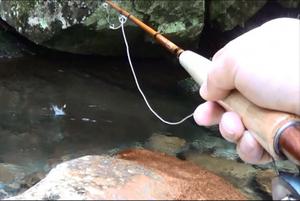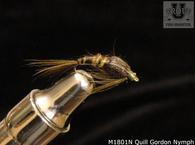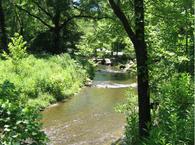
Dapping for trout can be an exciting fly fishing method for catching trout. Watching a trout strike the surface, or even jump out of the water just a few feet away will surely get the adrenaline flowing.
Dapping works best when you are able to position yourself very closely to the trout without alarming it. Dapping is a fly fishing method in which you simply dangle the fly along or just above the surface of the water, trying to entice a strike.
Here are a few tips to keep in mind:
Typically, you will only have a few feet of line extending from your fly rod's tip. To work up the trout's appetite, you may want to move the fly in a figure 8 or back and forth pattern just above the water's surface. Occasionally drop the fly to the water, simulating the way a fly will deposit its eggs, and make it easier for the trout to strike the fly. You need to know and closely and carefully approach where the trout is, or at least where a trout is likely to be. Consequently, the best streams to fish are those that have small pools and large rocks, steep gradients, logs, and/or vegetation or brush to hide behind. From my experience, brook trout seem to be the species on which this technique is most effective. Dapping can be an excellent follow up technique on a trout that has either seen and refused the fly on a “normal” cast, or has even hit the fly but refuses it on subsequent casts. The limited inspection that dapping allows the trout can thus trigger a strike. Dapping can be an exciting method to employ, as I have had trout jump partly or completely out of the water as many as 7 times before being caught or giving up. However, it is very common for the trout to miss the fly, so be patient. Also, be careful not to instinctively jerk the fly away from the trout if they jump out of the water for the fly. Instead, try to drop your rod tip a little once the trout has the fly, ensuring that it has the fly completely in its mouth before setting the hook. Finally, for greater reach and a less expensive approach, try using an inexpensive cane pole in lieu of a fly rod when dapping.





